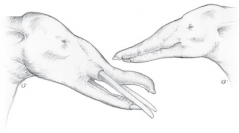

 Geodiversitas
35 (2) - Pages 377-445
Geodiversitas
35 (2) - Pages 377-445The cranial and mandibular anatomy of Gomphotherium angustidens (Cuvier, 1817), the commonest proboscidean found in the Middle Miocene of Europe is detailed. The basis of this study is made of the numerous fossils found at En Péjouan in the vicinity of Simorre (Gers, France), a locality of Astaracian age (zone MN7/8). These fossils fairly represent cranial and mandibular characteristics of the species in its type area and chronological extension (Gomphotherium angustidens sensu stricto). Compared to the skull of the ancestral morphotype of Elephantiformes (mostly conceived after the Oligocene genus Phiomia Andrews & Beadnell, 1902 ), the skull of G. angustidens s. s. displays numerous derived characters, many of them being hypothesized as Elephantimorpha or Elephantida characters, associated to plesiomorphous characters among Elephantiformes and observed in Phiomia. The facial area of Gomphotherium angustidens is enlarged, with thickened maxilla. The prenasal area is wide and the perinasal area is shorter. The posterior displacement of the nasal fossa occurs. The nasal fossa is widened with inflated lateral proces¬sus nasalis of the premaxilla. At the basis of the nasal fossa the premaxillae form a sagittal pillar with a reduced surface for the mesethmoid cartilage. In front of the orbit, the foramen infraorbitalis is divided into a small dorsal foramen and a large ventral one. The zygomatic arch shows a gracilized jugal. In the orbitotemporal fossa the crista orbitotemporalis and the maxillo-frontal crest form a gutter. There is no lachrymal foramen (at least in adults), the alisphenoid lateral wing is inflated and covers the maxillar capsule (where the germ of the growing tooth is positioned – a trait tied to the horizontal tooth displacement). There is no sagittal crest. The pal¬ate does not bear a spina palatina. The foramen ovale and foramen lacerum medial are confluent. The posttympanic part of the squamosal is enlarged. The tympanic bone is enlarged and the foramen stylomastoideus is laterally displaced. There is no canalis temporalis. The petrosal retains a perilymphatic foramen (ductus perilym¬phaticus). The ascending branch of the mandible is high. The condyle is higher than the coronoid apophysis. The mandibular angle is high, nearly at the level of the alveolar border of the horizontal ramus and not protruding. The morphological variation due to the growth pattern and sexual dimorphism is also demonstrated. Although Gomphotherium angustidens retains a long facial area, a relatively low cranium, replacement of decidual premolars by premolars, the pattern of tooth replacement and alveolar growth is the same as that of extant elephants, with the same sexual dimorphism. The variation of the shape and proportions of the cranium and mandible is checked in G. angustidens relatively to the dental ages scale defined for species that belong to the trilophodont grade (twenty three dental ages from the newborn up to the senile adult labelled I-XXIII). Size variation is firstly due to postnatal development. Secondly, at the dental age XIII-XIV (with P4-M1-M2) size variation is due to sexual dimorphism with an acceleration of growth in males. The best criteria for sexual assignment are: the width of the facial area (taken at the tip of the premaxillae or at the level of the nasal area) due to the lack of tusks in females (or much reduced), the height of the maxilla, the height and depth of the horizontal ramus of the mandible. On the other hand, the cerebral part of the cranium is rather of comparable size and development in both males and females. A reconstruction of the skulls of adult male and female G. angustidens is given. Relatively to the number of individuals, En Péjouan yielded 13 males (among them three are uncertain) and 11 females (among them two are uncertain), old individuals being either males or females, although the oldest specimen (with deeply worn M3s) is female. Such an association (due to taphonomical factors) is clearly different from the organization of a herd of the African elephant, mainly made of females and newborn and young males. The skull morphology of Gom¬photherium angustidens s.s. is compared to that of Miocene gomphotheres such as Gomphotherium “annectens group”, Gomphotherium subptapiroideum (Schlesinger, 1917), and Gomphotherium steinheimense (Klähn, 1922). It is concluded that the skull of Gomphotherium angustidens is clearly distinct from crania and mandibles of the various taxa included in G. “annectens group”. Although more comparable, the three species G. angustidens, G. subptapiroideum and G. steinheimense appear to be distinct. The skull of G. angustidens is also compared to that of the contem¬poraneous amebelodont Archaeobelodon filholi (Frick, 1933). The facial area of the latter is shorter and higher, the processus zygomaticus of the frontal and orbit are more anteriorly placed, and the symphyseal rostrum of the dentary is wider.
Mammalia, Proboscidea, gomphothères, Gomphotherium angustidens, anatomie, crâne, mandibule, Simorre, Miocène